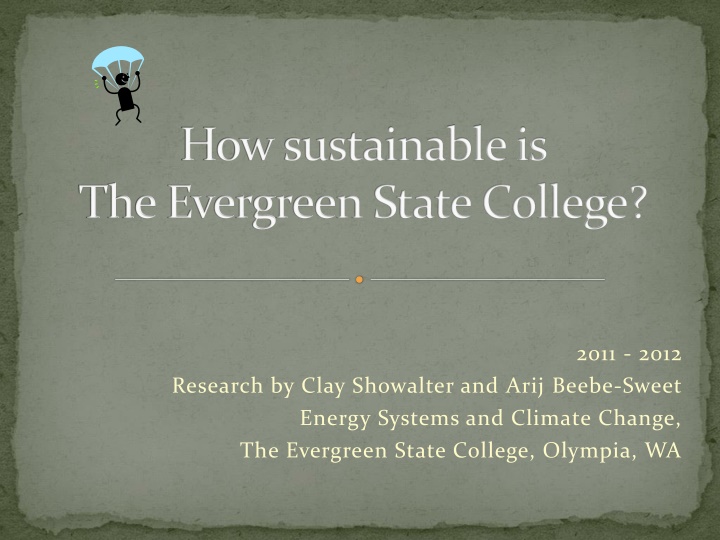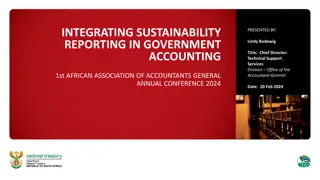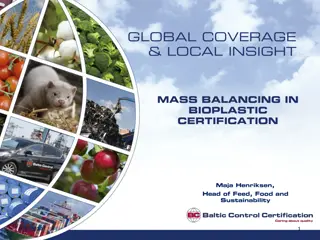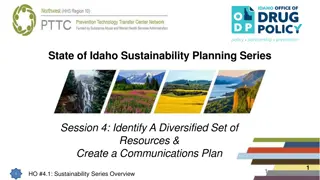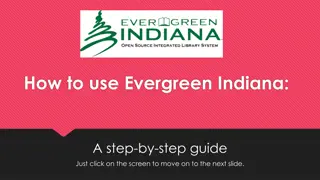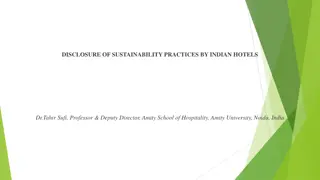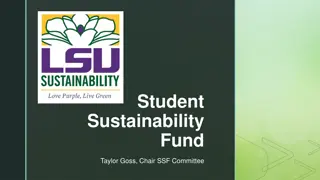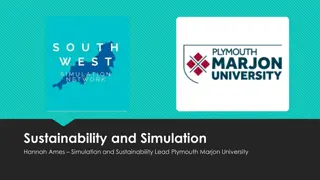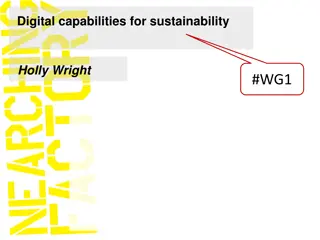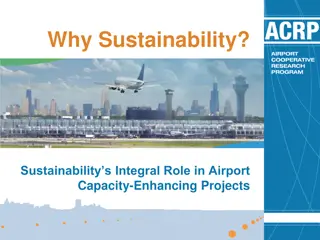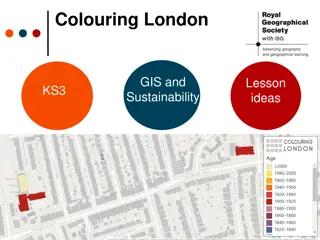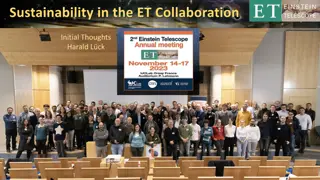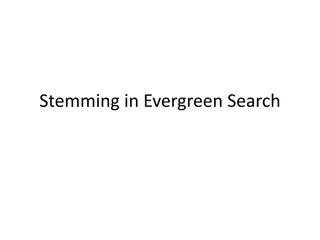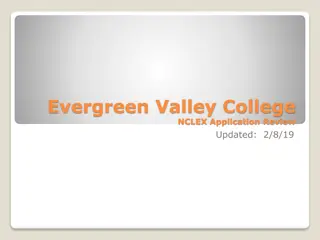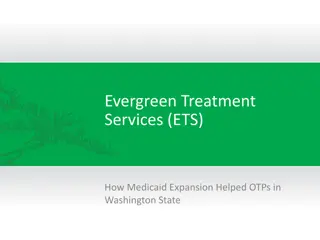Sustainability Research at The Evergreen State College
Research conducted at The Evergreen State College in 2011-2012 explores sustainability, carrying capacity, and human impact on the environment. The study delves into measuring sustainability using various methods and discusses the importance of sustainable practices for the college and society as a whole.
Download Presentation

Please find below an Image/Link to download the presentation.
The content on the website is provided AS IS for your information and personal use only. It may not be sold, licensed, or shared on other websites without obtaining consent from the author.If you encounter any issues during the download, it is possible that the publisher has removed the file from their server.
You are allowed to download the files provided on this website for personal or commercial use, subject to the condition that they are used lawfully. All files are the property of their respective owners.
The content on the website is provided AS IS for your information and personal use only. It may not be sold, licensed, or shared on other websites without obtaining consent from the author.
E N D
Presentation Transcript
How sustainable is The Evergreen State College? 2011 - 2012 Research by Clay Showalter and Arij Beebe-Sweet Energy Systems and Climate Change, The Evergreen State College, Olympia, WA
Hypothesis H1: Evergreen is sustainable. H2: Evergreen is sustainable to some degree, but needs to improve certain elements to become truly sustainable. H3: Evergreen is not sustainable. Null: There is no way to measure Evergreen s sustainability.
What is Sustainability? The capacity to endure. People Planet Profit geo Logic Systems http://geologicsystems.wordpress.com/2011/06/21/a-business-case- for-sustainability-attention-alberta-oil-sands-operations/
Why is sustainability important?
Carrying Capacity All living things are reliant on a healthy ecosystem. All creatures impose a load on their environment s ability to supply what they need and absorb what they excrete. Carrying capacity is the maximum persistently feasible load for a given creature and way of life.
Humans & Carrying Capacity Technological advances can increase the Earth s human carrying capacity. Phantom carrying capacity. Each enlargement of human carrying capacity means diverting some of Earth s life supporting capacity away from other species.
How is sustainability measured? There are several established ways for measuring sustainability Life Cycle Analysis Environmental Sustainability Index Ecological Footprint Analysis Anthropologists Cultural Approach AASHE STARS (Sustainability Tracking, Assessment & Rating System, for Colleges and Universities) Current system used and acknowledged by Evergreen.
Choosing our Metric Global Reporting Initiative (GRI) The GRI framework is the most widely used standardized sustainability reporting framework in the world. Developed by NGO s CERES and Tellus Institute (supported by UNEP) in 1997 Has gone through several revisions as an understanding of the metric has evolved current standard G4 is in practice.
Six Performance Indicators Environmental Human Rights Labor Practices and Decent Work Society Product Responsibility Economic
Environmental Materials Energy Water Biodiversity Emmissions, Effluents, and Waste Products and Services
Human Rights Investment and Procurement Practices Non-discrimination Freedom of Association and Collective Bargaining Security Practices Indigenous Rights Assessment/Remediation
Labor Practices and Decent Work Employment Labor/Management Relations Occupational Health and Safety Training and Education Diversity and Equal Opportunity Equal Renumeration for Women and Men
Society Community engagement Operations impacts on local communities Compliance with laws and regulations
Product/Services Responsibilities Lifecycle stages of products with health and safety impacts Practices related to customer satisfaction, such as surveys and evaluations
Economic Direct economic value generated and distributed Policy and practices of spending Hiring procedures for administration
Boundaries Should Faculty and Student commuting practices be included in our GRI?
Decision Tree GRI Sustainability Reporting Guidelines http://www.globalreporting.org/NR/rdonlyres/D8B503A9-070C-43DB-AD0F-5C4ACB1EBF39/0/G31RefSheet.pdf
Conclusion Critical evaluation of metric (GRI) and its implementation. Global Reporting Initiative Systems Thinking Vision of the Future Question society faces: What impacts are we willing to absorb or endure?
